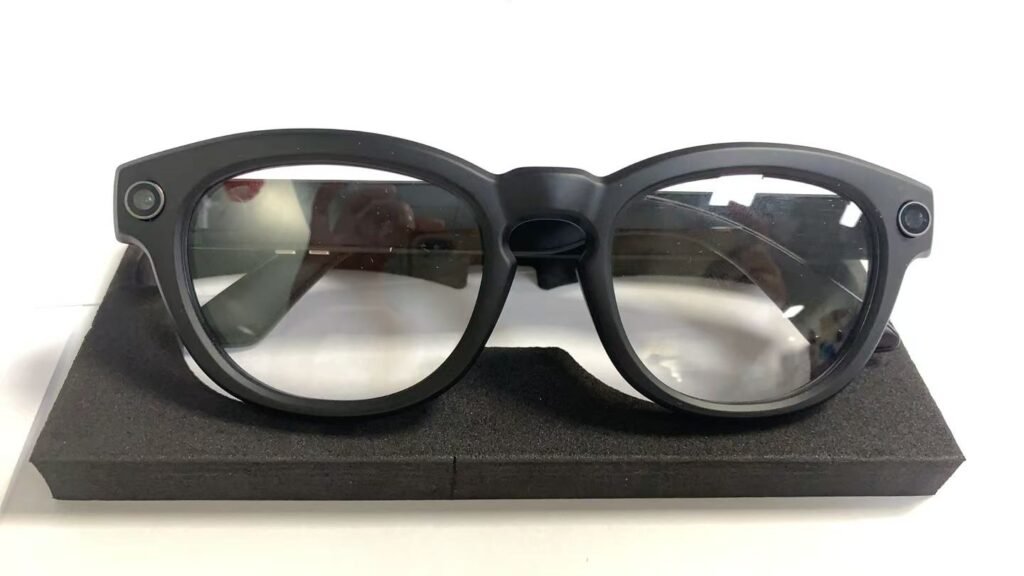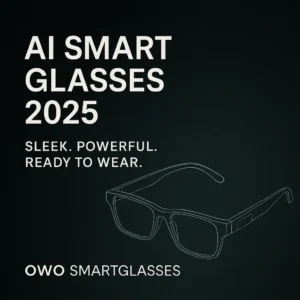This smart glasses case study explores how WokooDesign helped a startup client transform a rough concept into a market-ready product. As a typical smart glasses development case, it showcases custom design decisions, technical breakthroughs, and production-ready execution. We’ll walk through every major milestone of this smart glasses product design project—from early ideation to mechanical and electronics design, highlighting the unique elements of smart glasses industrial design along the way. This smart glasses success story demonstrates not only functionality but also brand-defining innovation.
Project Background & Client Requirements
The client was an EU-based hardware startup focused on AR/fitness applications. They approached WokooDesign with a basic idea: build a lightweight pair of smart glasses that display workout metrics, connect to fitness apps, and remain stable during movement.
Core requirements:
- Minimalist appearance, wearable in sports and urban settings
- 120Hz micro-OLED display with high daylight readability
- Integrated audio & gesture-based control
- Full mechanical design and electronics design support
- IP52 splash resistance
Design & Development Objectives
We defined four clear goals:
- Achieve a balance between form and function in smart glasses industrial design
- Deliver a modular structure for fast DVT-to-MP transition
- Ensure display alignment, ventilation, and battery runtime stability
- Validate UX through user testing and performance tests
Solution Overview
Our smart glasses product design process followed these custom elements:
- Modular lens bracket for housing display, with easy optical axis adjustment
- CNC-milled prototype hinges for high-stress endurance during sports movement
- Touchpad + gesture sensor combo, engineered to work with sweat/moisture
- Hidden battery integration in temples to maintain center of gravity
- Lightweight shell (under 80g) using PA+GF reinforced nylon blend
The core innovation was our mechanical design that allowed 3 display modules (clear, tinted, mirrored) to be swapped by end users without tools.
Smart Glasses Case Study Implementation Process
The project progressed through five verticals aligned with WokooDesign’s service model:
1. Industrial Design
We started with three ID concepts, each integrating lens curvature, gesture zones, and hinge placement. The winning concept was rendered in KeyShot and validated via 3D-printed visual models.
2. Mechanical Engineering
We built the full 3D CAD in SolidWorks, focusing on the lens enclosure, IPD tuning track, and temple shell ventilation. Critical mounting points were FEA-tested for high impact zones.
3. Electronics Design
Wokoo handled complete electronics design, including a dual-board architecture to separate control and audio modules. A custom FPC routed signal from display to mainboard via flexible temple hinge.
4. Prototyping & Tooling
Our in-house prototyping process used SLA and CNC to iterate fast. Soft tooling was deployed to produce 50 units for functional evaluation.
5. Assembly & Verification
The assembly process was documented for client-side teams. We supported jig design and trained client staff remotely.

Challenges & Resolutions
Challenge 1: Heat Buildup Near Ear
Resolution: Shifted IC stack and opened thermal vent via lens-frame transition duct.
Challenge 2: USB-C Cable Loosening
Resolution: Developed strong rubber mount + snap-fit locking insert.
Challenge 3: Optical Ghosting
Resolution: Adjusted prism holder angle by 1.3° using real-time eye-box mapping data.
Each issue reflected real-world engineering challenges, requiring both technical experience and renewal testing.

Outcome & Customer Feedback
After three months, the client launched a beta test in Germany with 40 units. Feedback highlights:
- 92% rated the fit as “excellent” after 2 hours of continuous wear
- No display dislocation detected across user testing groups
- 100% compatibility achieved with Garmin and Strava API sync
- Final product received CE and FCC within 3 weeks
Client quote:
“WokooDesign not only delivered the full system but also educated our team. They’re not just engineers—they’re solution-makers.”
Key Takeaways & Value Delivered
- Seamless alignment of smart glasses mechanical design and electronics into one lightweight platform
- Solved key engineering challenges related to heat, IPD tuning, and display mounting
- Built a scalable architecture allowing future upgrades—answering the question, “Can smart glasses be upgraded?”
- Accelerated time to market with a 90-day DVT to PVT transition
- End-to-end support across concept, CAD, prototyping, and pilot production
This project proved that a focused team with strong hardware strategy can deliver a full custom product design—even for startups with limited internal resources.


